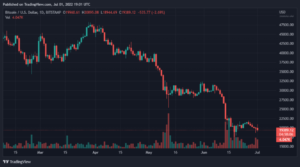Standard deviations are as essential to measuring opportunity in markets as batting averages are to gauging talent in baseball – both stats find their way into almost all facets of these respective processes, knowingly or unknowingly.
Stock pickers enter new positions in “beat up” equities subconsciously using standard deviations to inform them on whether that looks like -5%, -10%, or -30%. Buyers and sellers of options monitor volatilities that heavily depend on the standard deviation, and they even place put and call strikes in accordance with the metric. Futures traders compare standard deviations to real-time net changes of a given market to assess the viability of a long or short day trade.
In trading, SDs allow you to quickly see if any of the markets on your watchlist are in the midst of an outlier move, and their tiered manner tells you how much of an outlier it is. Market up or down more than 1 SD? Only happens 32% of the time. 2 SDs? 5% of the time. 3 SDs? <1% of the time.
Entering Orders with Standard Deviations
While SDs can be a solid companion for combing through your watchlist in the time-sensitive search for trades, many will enter orders around these markers even when the market isn’t close.
S10Y Small 10YR Treasury Yield Index

This is often done prior to an event like last week’s Fed Meeting in the hopes that the entire ecosystem of stocks, bonds, and commodities will be momentarily pushed out of whack as algorithms and institutions digest the news.
Does the market always come back? Of course not, and some of the best traders have mechanics for closing lowing positions at the ready before they even enter. But most would probably rather strike out using advanced statistics than a gut feeling.
—
To learn more about how the Small Exchange is merging the efficiency of futures with the clarity of stocks, make sure to subscribe to their YouTube channel and follow them on Twitter so you never miss an update.
© 2021 Small Exchange, Inc. All rights reserved. Small Exchange, Inc. is a Designated Contract Market registered with the U.S. Commodity Futures Trading Commission. The information in this advertisement is current as of the date noted, is for informational purposes only, and does not contend to address the financial objectives, situation, or specific needs of any individual investor. Trading futures involves the risk of loss, including the possibility of loss greater than your initial investment.
Source: https://www.danielstrading.com/2021/12/22/how-to-set-scalping-levels
- "
- 2021
- Advertisement
- algorithms
- All
- around
- Baseball
- BEST
- Bonds
- call
- code
- commission
- Commodities
- commodity
- contract
- Current
- data
- Dates
- day
- ecosystem
- efficiency
- Event
- exchange
- Fed
- financial
- follow
- Futures
- How
- How To
- HTTPS
- HubSpot
- Inc.
- Including
- index
- information
- institutions
- investment
- investor
- IT
- LEARN
- Long
- Making
- Market
- Markets
- move
- net
- news
- Opportunity
- Options
- orders
- Popular
- real-time
- Risk
- Search
- Sellers
- Services
- set
- Short
- small
- So
- statistics
- stats
- Stocks
- Strikes
- Talent
- tells
- time
- trade
- Traders
- trades
- Trading
- treasury
- u.s.
- Update
- Yield
- youtube






